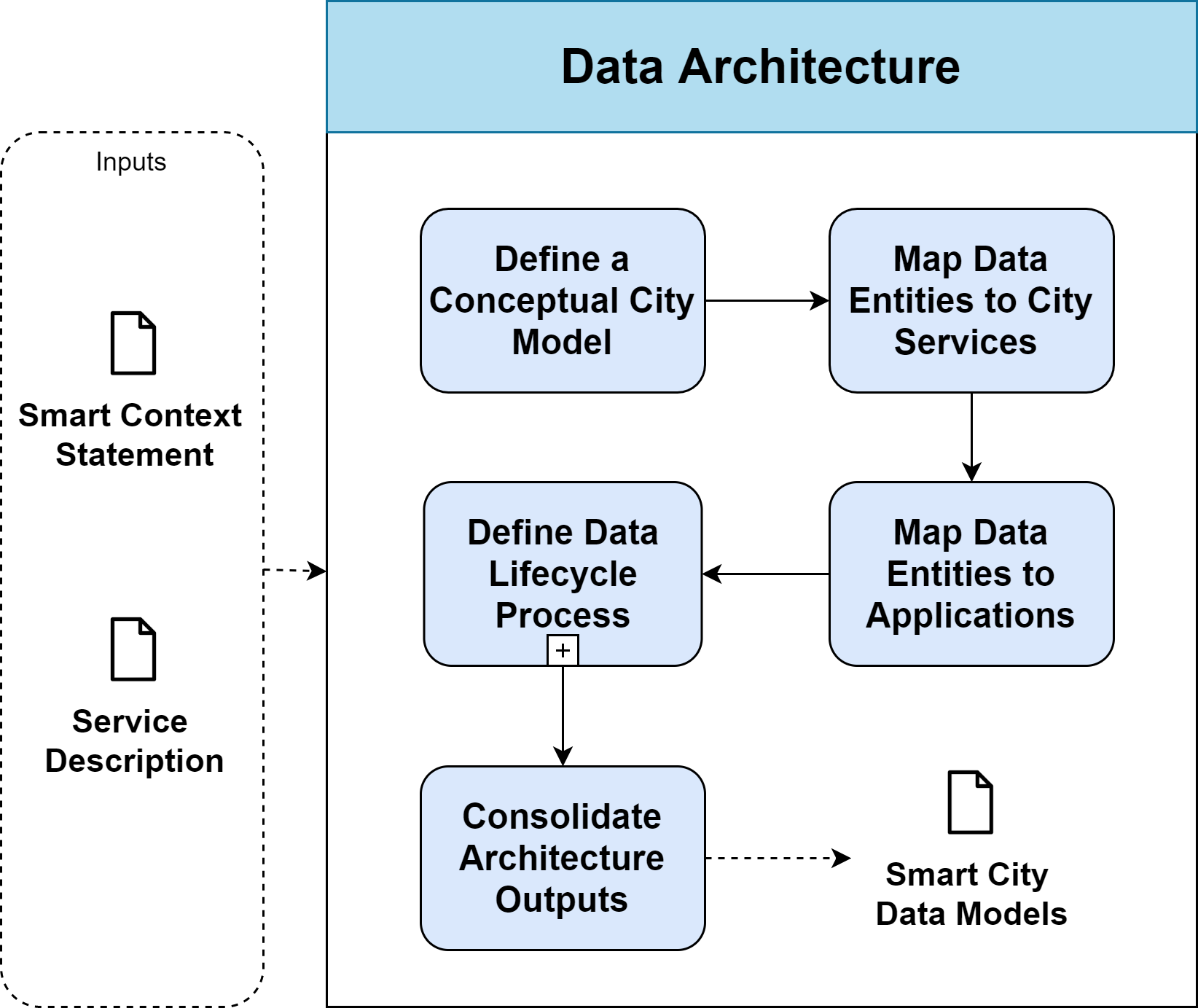- Define a Conceptual City Model
- Define a Conceptual City Model as a guide for establishing a model for data interoperability.
- Map Data Entities to City Services
- Map data entities to existing city services defined in the Service Architecture.
- Map Data Entities to Applications
- Map data entities to the multiple applications that support city services.
- Define Data Lifecycle Process
- Define the process to manage and governance data entities throughout its lifecycle to support city services.
- Consolidate Architecture Outputs
- Consolidate architecture diagrams, matrices, and catalogues resulting from the Data Architecture exercise.
Data Architecture
The Data Architecture process aims to develop the Data and Application Architecture, describing how the city’s Information Systems Architecture will enable the Service Architecture. The Information Architecture describes the interaction of the applications and data of the city. For example, a Smart City dashboard enables city monitoring by displaying real-time data on weather, air pollution, public transportation, delays, public bikes availability , river level, and electricity (Kitchin, R., 2014).
Activities
The Data Architecture lifecycle stage of the Information Architecture Process (see fig. 1) includes the following main activities and subprocesses:

Inputs
- Smart Context Statement
- Consider the existing data principles, data standards, and data interoperability and security requirements specification from the Smart Context Definition.
- Service Description
- Consider the existing list of city services and their related architecture concepts (e.g. city actors, contracts, indicators, etc.) from the Service Architecture Definition.
References
- Kitchin, R., 2014. The real-time city? Big data and smart urbanism. GeoJournal, 79(1), pp.1-14.
- The Open Group. “Open Group Standanotepadrd TOGAF Version 9.1”, 2011.